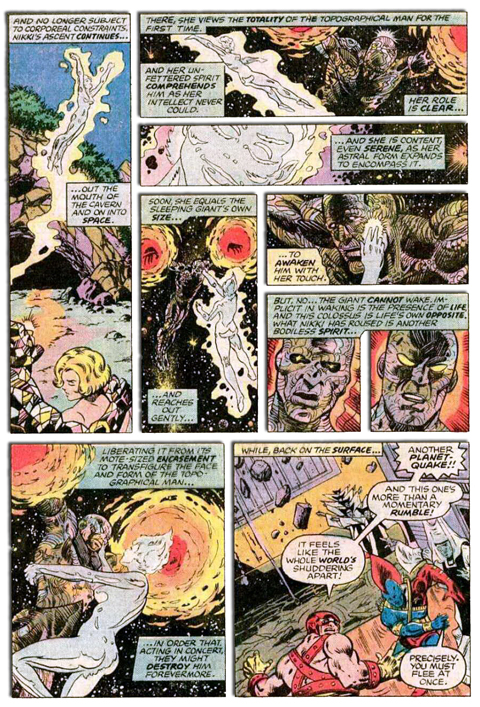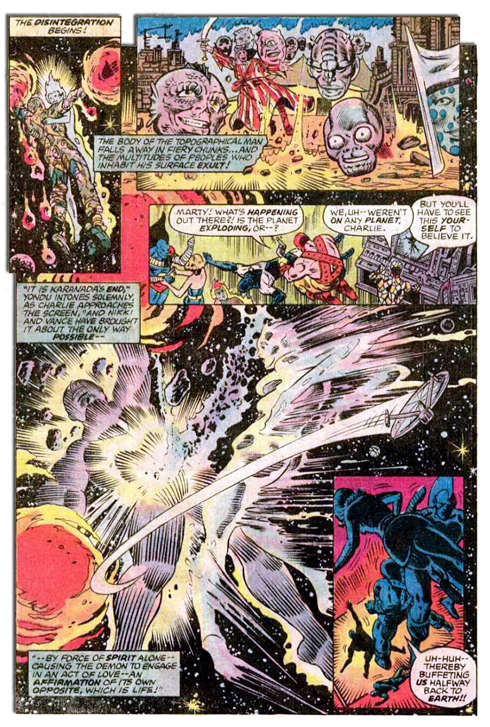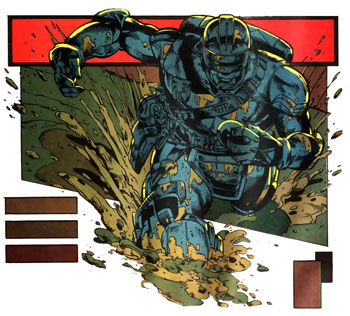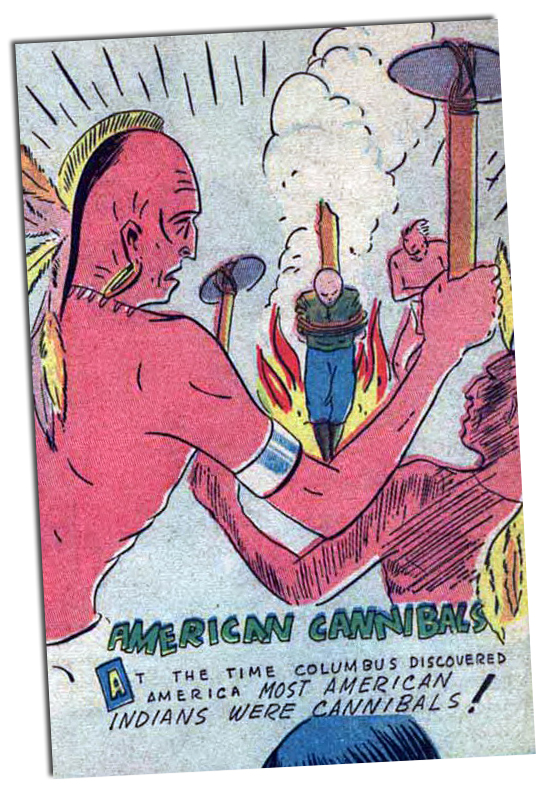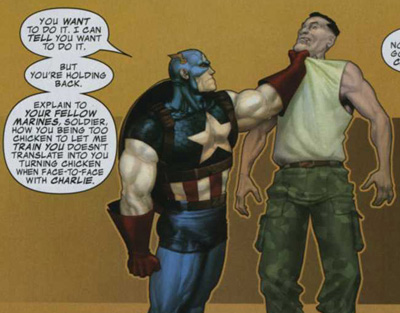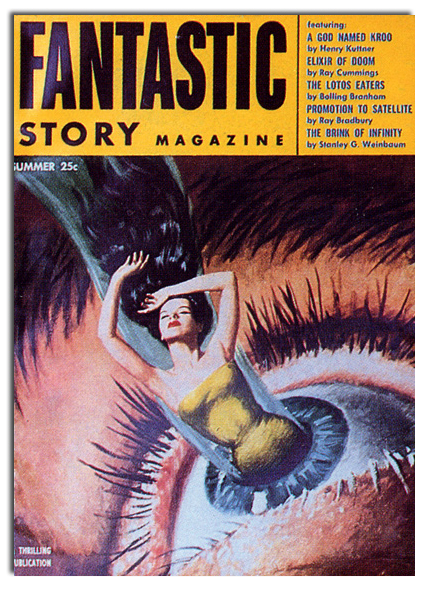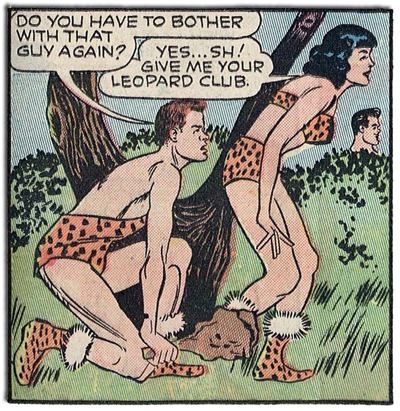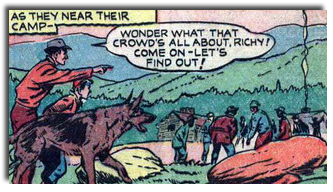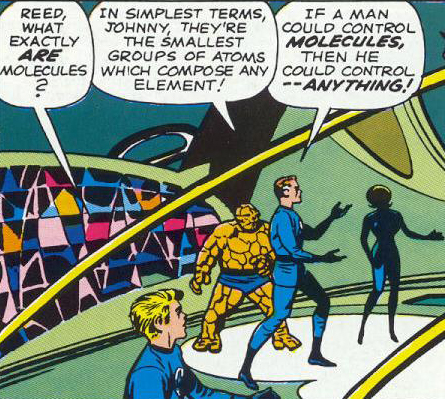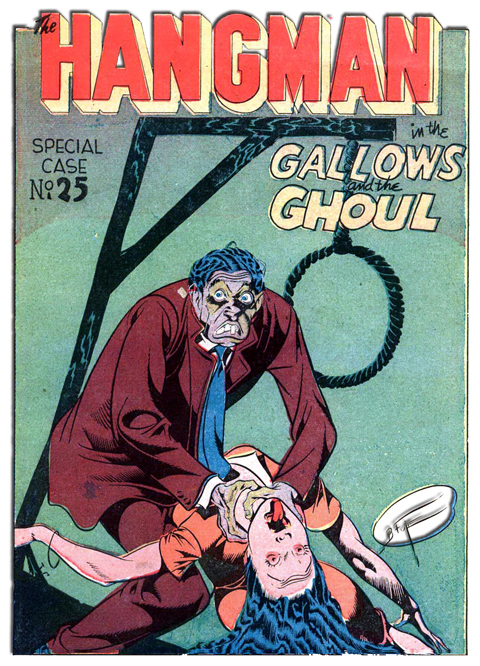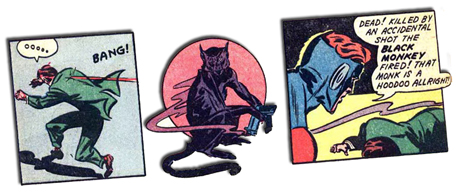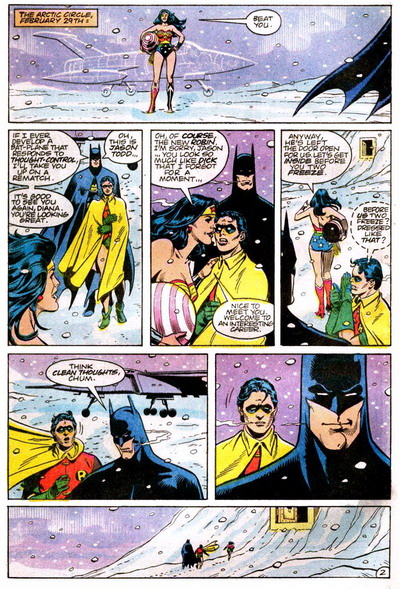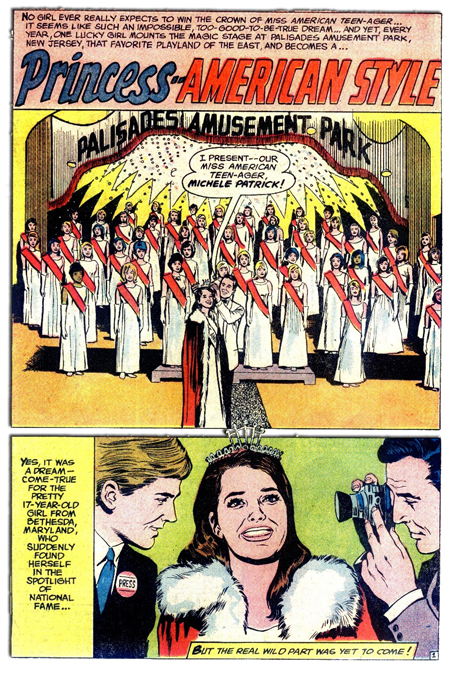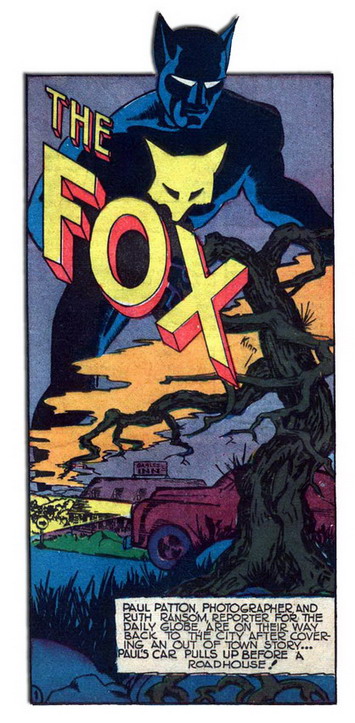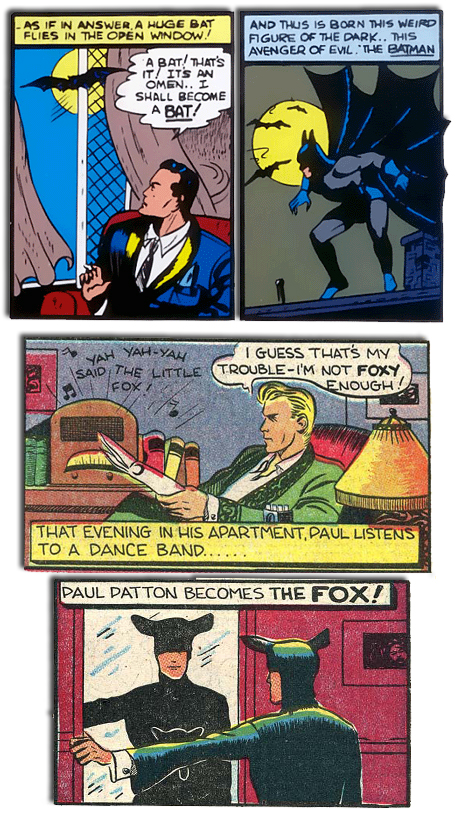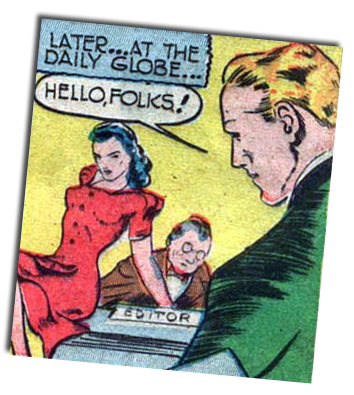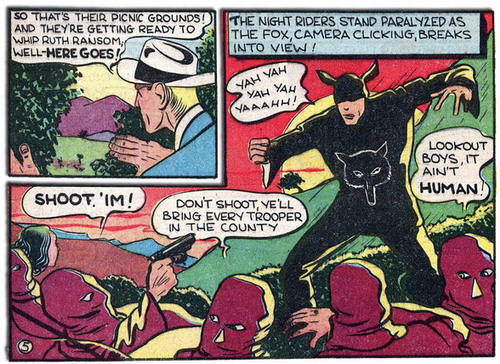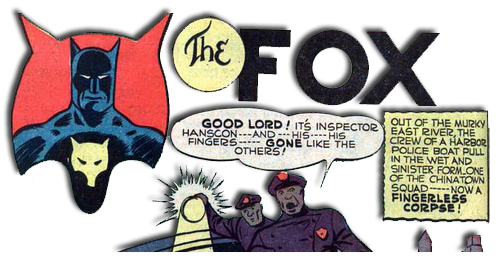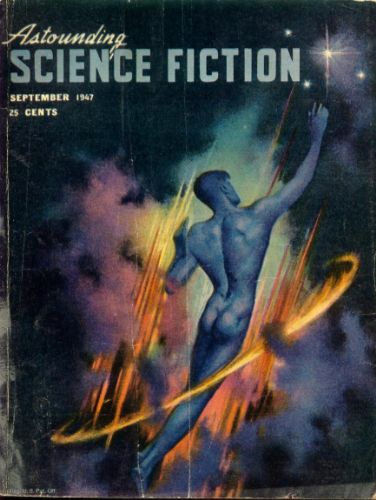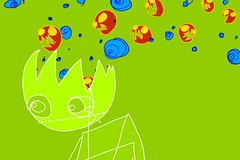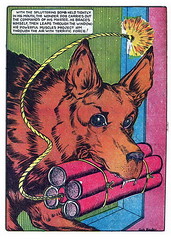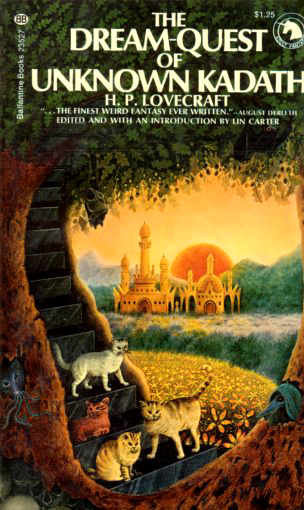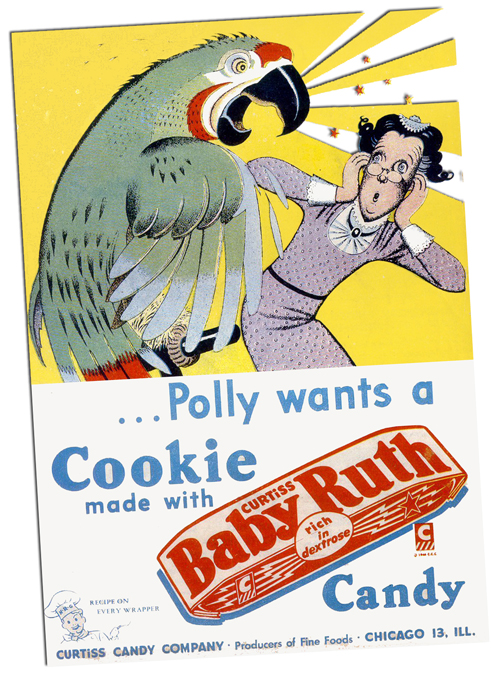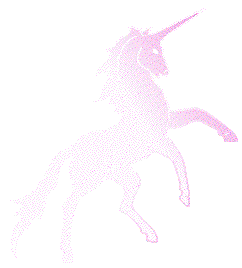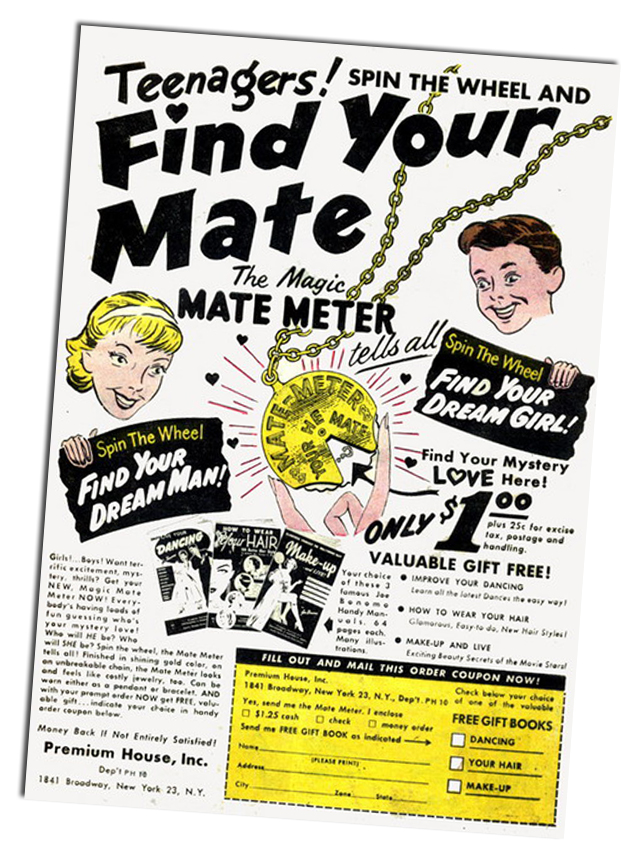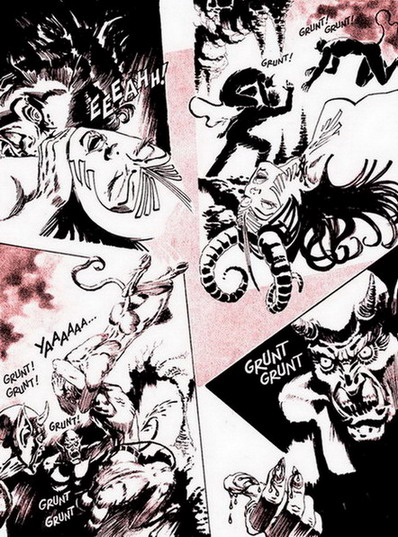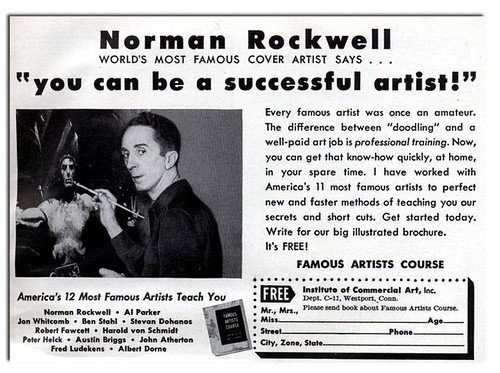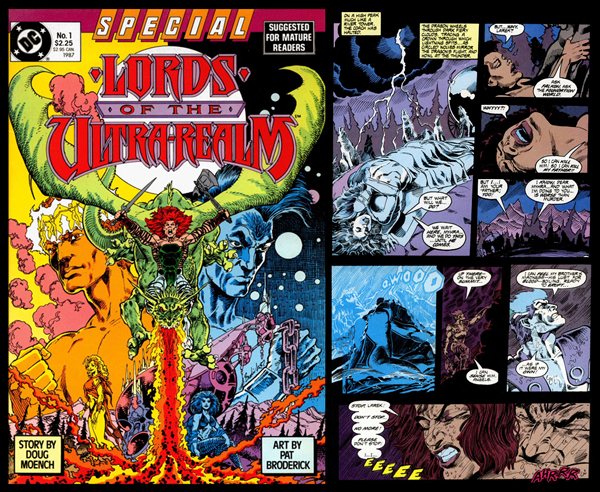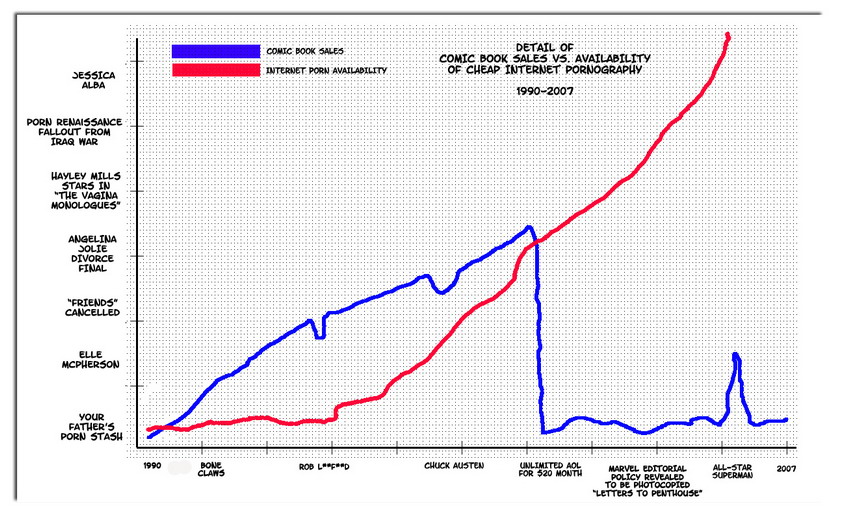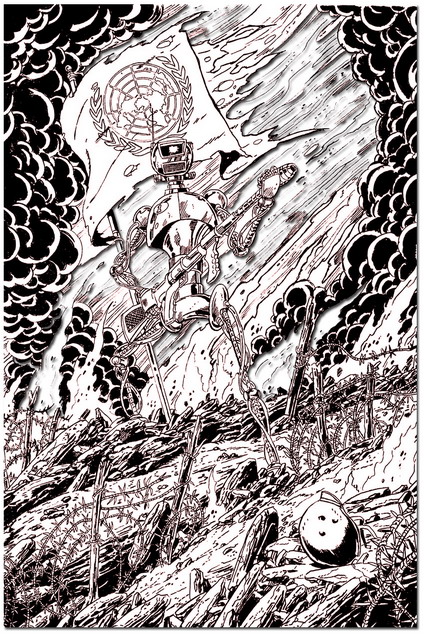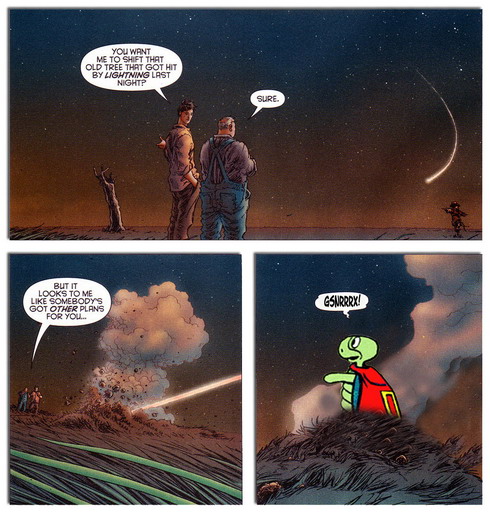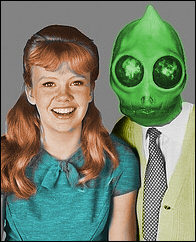 With the possible exception of the Warren or Conan black and white magazines the sex act was not usually shown in main stream comic books. Not in Marvel and definitely not over in DC. There was plenty of risque' poses, editorial swimwear and the usual skimpy costumes but depictions of the act where usually not shown. When it came to showing sexual acts comic books used the equivalent of a Bollywood romance scene, just when things got intense everybody would suddenly start dancing. This changed a bit with the Steve Gerber run on Guardians of the Galaxy in the 1970s.
With the possible exception of the Warren or Conan black and white magazines the sex act was not usually shown in main stream comic books. Not in Marvel and definitely not over in DC. There was plenty of risque' poses, editorial swimwear and the usual skimpy costumes but depictions of the act where usually not shown. When it came to showing sexual acts comic books used the equivalent of a Bollywood romance scene, just when things got intense everybody would suddenly start dancing. This changed a bit with the Steve Gerber run on Guardians of the Galaxy in the 1970s.
The Guardians of the Galaxy were a team of genetically modified humans bred to survive in harsh extraterrestrial conditions who existed in an alternate Marvel Universe where Earth and the solar system was was conquered by the Badoon. Charlie was dense and powerful, Martinex was made of crystal could exist in extreme cold and Nikki could live in extremely hot environments. Vance Astro was an astronaut who had lived in suspended animation while traveling at sub-light speeds and was the link to the heroic past. He would later change his possible future by meeting his younger self and activating the boys' latent mutant powers. The young Vance would then join various groups to include the Avengers. The non-humans of the group included Yondu, a warrior from another world and later, Starhawk, a mutant who shared a single body with his adopted sister.
The Guardians first appeared back in 1969 in Marvel Super-Heroes #18 and after a 1974 guest-appearance in Marvel Two-In-One #4-5, were later revived as a regular feature in Marvel Presents #3 in 1975. Their story was directly related to a throw-away tale in the original Silver Surfer series. One of the great things about the 70s and 80s was that often when a series was canceled the story would continue or be concluded in other titles. This was back when sales for even a failing book were much larger than some of the top-selling books of today. The fan base who wanted to read a character's adventures was large enough that it would not harm a title to have a guest-appearance form a failed book and could even boost sales. The Dark Fist story in Iron Fist by Claremont & Byrne concluded in Marvel Team-Up and was all the better for it. Captain Marvel saw the end of a space saga finish in another title, giving readers closure. Guardians of the Galaxy was one of those stories that also finished their arc elsewhere. Their story continued as guest-stars in various magazines, really coming to an end with the Korvac Saga in the Avengers title. There was a later series that I don't look back on with fondness because of the slavish adherence to 90's Marvel characterization and by relying heavily on elements of the X-Men, including the Phoenix. The series also adhered to the maxim that "Every Super Hero Team Needs A Wolverine" by introducing Logan's many times great-granddaughter as a despotic villain.
The series was best in the 1970s, when Marvel was freaking crazy and would publish anything no matter how odd, to see what worked and what didn't (Spider-Man and Doctor Strange being examples). The mid-70s were a good time for Marvel as they attracted older readers seeking a deeper context than what other companies would be giving in comparison. While I dislike hippies in general the modern sell-out professional hippie of the 70s was a different breed and wrote some darn good comics.
It was in Marvel Presents #7 (Nov 1976) that Steve Gerber created a blip of controversy with his run. While fighting the Badoon the Guardians came across the Topographical Man, a planetary-sized humanoid creature who fed on exploding galaxies. The TM was also an energy vampire, and absorbed the psyche of Vance Astro while he did battle with one of its avatars. Various alien races had also come to live on the planetary creature, though they acted more like prisoners of hell than willing settlers. At the same time Vance was fighting an avatar, Nikki was being convinced by a cult to commune with the Topographical Man in order to convince it to stop its plans of destruction. Nikki allowed herself to be strapped into a machine that separated her spirit from her body and she went to have a chat with the big guy.
But a few moments after being introduced to the Topographical Man, Nikki decided words were cheap and instead of communing proceeded to have hot sweaty space sex with it by bringing the spirit of Vance Astro to the fore of the creature's consciousness. The idea was that an act of love and creation would destroy a creature of anti-life.
The mind of Vance Astro was all for it as the sexual tension between the pair had been building for a while. Nikki was very uninhibited and since Vance was unable to remove his space suit for fear of dying, he was the safe boyfriend she didn't have to commit to, which made Vance a little crazed. Nikki and Vance wasted no time and got busy, much to the delight of the planetary population who had a front row seat to the spectacle. When I read this I really felt for those doomed people that had unfortunately settled on the equator. At least they died quickly.
As far as the sexual imagery goes, if not for the entire context of the story I would have suspected they were really sneaking in scenes of soft core porn rendered by artist Al Milgrom. Note the positions of the couple, the almost-obscured ecstatic grin Nikki displays in the first panel of the second page and the jet of energy from the Topographical Man's abdomen. But Gerber draws the reader away from the idea of titillation as the sexual themes continue beyond the art. True, the same effect could have been achieved by Nikki and Vance having a dialog, holding hands and agreeing to chose life instead of death, but that would have made for some boring pages. The climax of the story, literally, was an orgy of death for an entire civilization as they changed form into some new entity. The scene was probably handled as well as could be expected given the medium and the era.
Bear in mind that this was before the internet and the near instant critiques and analysis that accompanies and sometimes precedes the release of a book. If a reader desired a professional or semi-professional review of a title one had to wait for an industry magazine, fanzine or rely on the local comic book store. Marvel Presents #7 was one of those books that had the proprietors talking and the customers buying. I witnessed at least a few sales pushes emphasizing the covert sexual content over the story (I saw similar tactics with Conan) but that was the rarity. The story was not of the"tee-hee, lookit her underwear" style that permeates many current titles but instead portrayed a mature act in a way that didn't insult either the younger reader that might miss the subtext or the older audience that would understand it.

